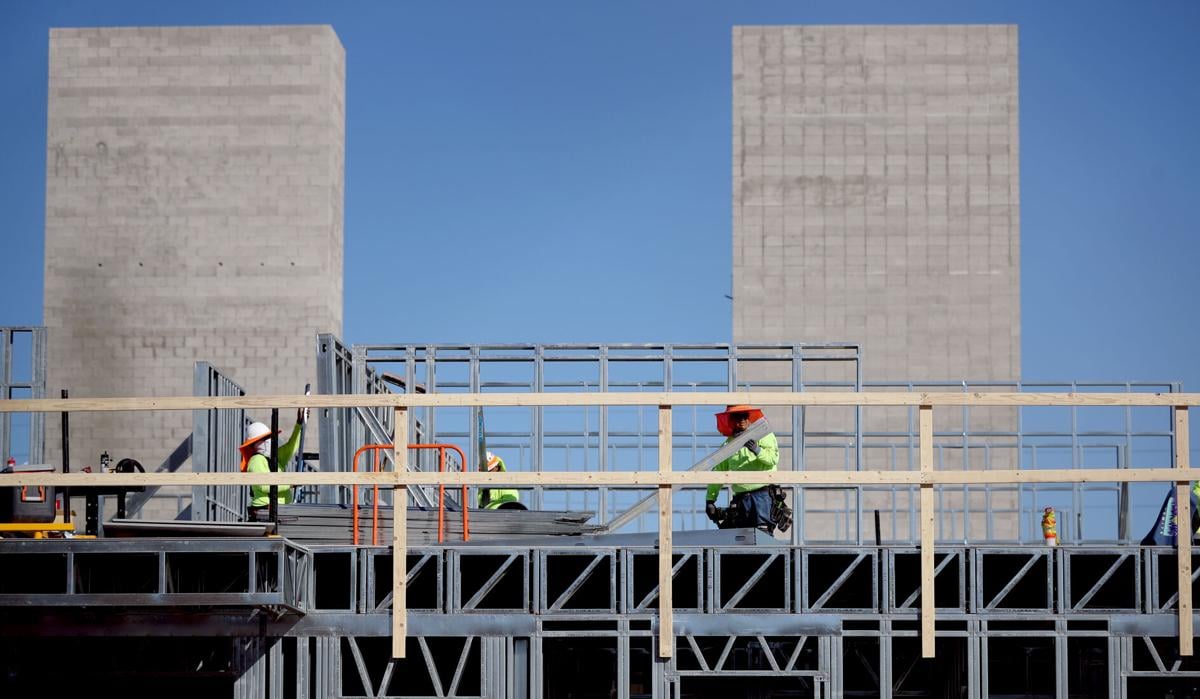PHOENIX — Interest rates may be rising, driving up the cost of mortgages. But a new report from Arizona’s Office of Economic Opportunity shows the state’s construction industry continues to add jobs.
And the reason appears to be that developers are finding new opportunities, shifting their focus to multi-family homes as various factors, including rising mortgage rates, put the dream of a single-family home beyond reach for many.
Doug Walls, the agency’s labor market information director, pointed out Thursday that as recently as February of this year, fewer than one out of every five permits for new private housing were for buildings with five or more units.
Now that figure is up to 48%.
The trend closely matches the series of sharp increases in interest rates, with the federal funds rate — which influences all other lending — rising from less than 1% at the beginning of the year to 3.9%. And the housing figures that Walls cited Thursday come even before the economy factors in the latest half-point rate increase announced a day before, bringing the fed funds rate to 4.4% — the highest in 15 years.
“We’re not able to necessarily know what the future holds,” he said. But Walls said that the average monthly mortgage payments has increased, not only in Arizona but across the nation, as a result of the actions of the Federal Reserve Board.
At the same time, he noted, the prices of homes themselves have been going up. That has caused other ripple effects.
The median number of days that homes remain on the market in Arizona rose by five in November, to 59 days. That compares with just 24 days a half a year ago.
And the number of homes on the market is now 24,839, a 139% increase from the same time a year ago.
But there’s another side to all that. Walls said the median listing price of existing homes decreased in November to $462,500 from a peak earlier this year of $520,950. That, in turn, is good news for buyers — at least those who can afford a mortgage.
And everyone else? They could wind up as renters.
The addition of 800 new workers in construction in the past month, far higher than the average in the past decade, is indicative of what appears to be a healthy economy despite the fact that the seasonally adjusted unemployment rate for November hit 4.1%, two-tenths of a percentage point above October and the highest since September 2021.
Overall, Arizona added 26,200 private sector jobs in November and 102,200 in the past year.
Employment in retail trade is up 2.1% for the month as seasonal shopping begins, with particularly strong month-over-month gains in hiring by department stores and in shops specializing in clothing and accessories.
Bars and restaurants added another 1,300 workers in November, bringing total employment up by nearly 11,000 over the same time a year earlier. But hiring at hotels and resorts was weak in November, with that sector of the economy actually shedding 400 jobs from the prior month.
Manufacturing employment continued to grow, though only adding 100 jobs this past month. But overall hiring remains strong, with employment up 8.3% over the same time a year earlier.
And one of the strongest sectors of the economy is health care, with ambulatory care — doctors’ offices and clinics — hiring another 4,000 people in November.
Conversely, there was only lackluster growth in parts of the financial sector dealing with things like lending for mortgages and car loans, likely fallout from those rising interest rates. But employment by firms handling real estate rental and leasing rose another 1.2% in November.
This national chain is moving across the street in midtown. Gabriela Rico / Arizona Daily Star





